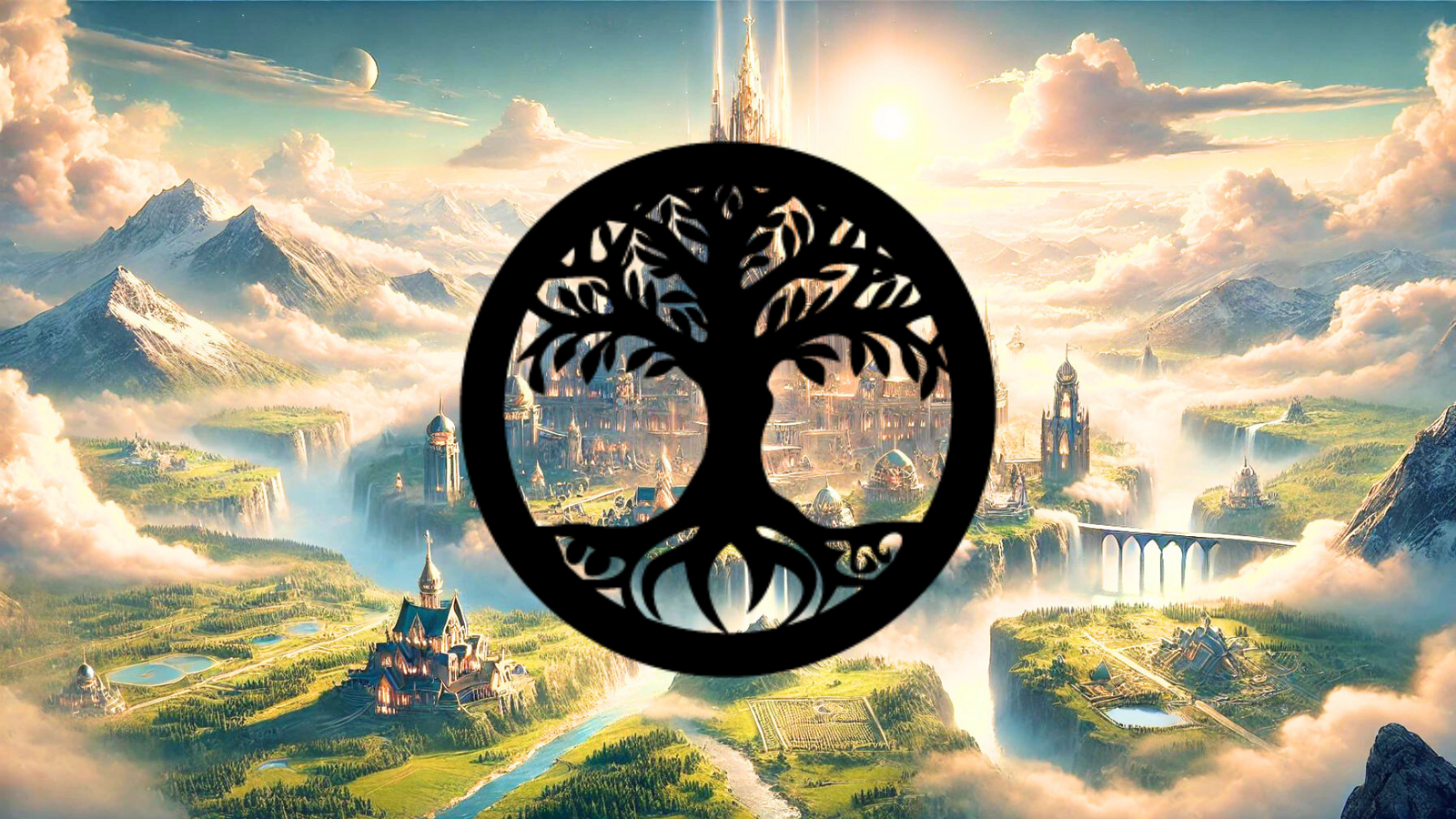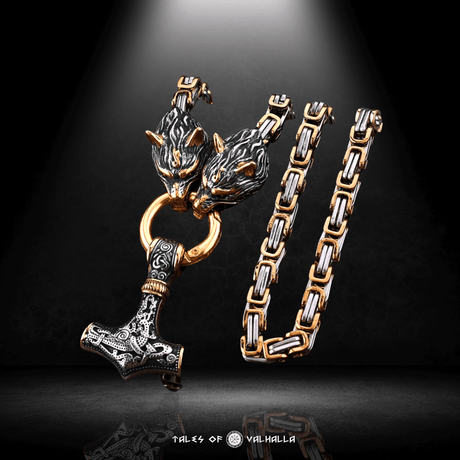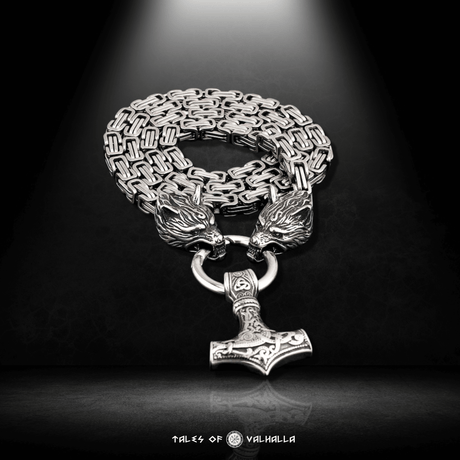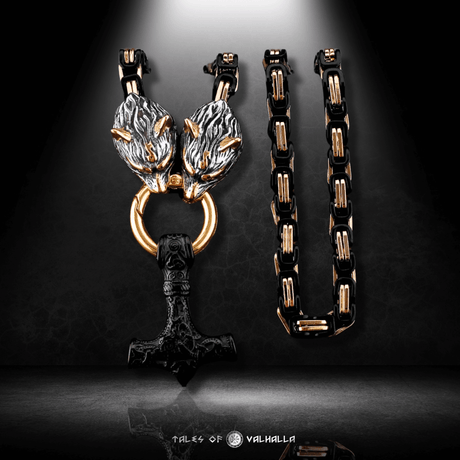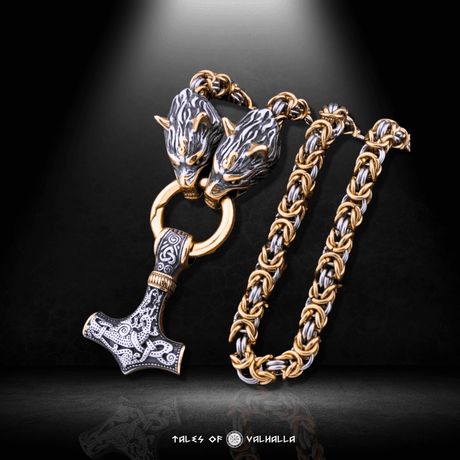Explore the world of norse symbols, where ancient scandinavian viking symbols show strength, resilience, and the warrior spirit. This article looks into the deep meanings and history of these symbols of strength. It reveals the norse symbol meanings that have lasted for centuries.
From the viking symbol for strength to the scandinavian symbol for strength and the norse symbol for strength, these symbols connect us to Scandinavian culture and Viking ancestors. Get ready for a journey through the magical world of norse symbols. Here, the past and present meet to show us the real essence of Viking strength and resilience.
The Origins of Norse Symbolism
The symbols of the Norse people come from a deep cultural heritage in Scandinavia. They are linked to the stunning landscapes and the myths that shaped their view of the world. These symbols show how myth and reality blended together.
Exploring the Ancient Roots of Nordic Culture
The Nordic people felt a strong bond with nature, which shaped their symbols. Their land was full of tall mountains, wild rivers, and the norsea symbol meanings. These elements gave their symbols a sense of strength and endurance.
The Intertwining of Myth and Reality
The norse symbols and scandinavian viking symbol are more than just decorations. They represent the beliefs, values, and experiences of the Norse people. These symbols mixed the stories of myths with the real challenges of their tough homeland.
"The norsea symbol meanings are a window into the rich tapestry of Nordic culture, revealing the resilience, spirituality, and connection to the natural world that defined the lives of these remarkable people."
Viking Strength Symbols
The symbols of strength in Viking and Scandinavian culture show the resilience and courage of the Norse people. These viking symbols for strength, scandinavian symbols for strength, and norse symbols for strength were key to their values. They helped the Nordic populations face their tough environments.
The Valknut, a design of three interlocking triangles, is a well-known viking symbol for strength. It was linked to the god Odin and warriors who went to Valhalla. The Valknut showed the strong link between the world of mortals and the gods.
The Aegishjalmur, or "Helm of Awe," is another scandinavian symbol for strength. It was thought to make enemies fear and protect the wearer from harm. Its eight arms were seen as a sign of being unbeatable in battle.
- The norse symbol for strength called the Vegvisir was a sacred compass. It guided the Vikings through tough seas and life's challenges.
- The Yggdrasil, the sacred tree of life, showed how everything in the world is connected. It symbolized the strength and resilience of the Nordic people.
- The Thunderbolt of Thor, the Norse god of thunder, stood for the power and unbreakable spirit of Viking warriors.
Today, these symbols of strength still inspire us. They remind us of the lasting impact of Viking and Scandinavian culture.
The Valknut: Symbol of Fallen Warriors
The Valknut is a standout among norse symbols. It's linked to the god Odin and honors those who have fallen. This symbol, made of three interlocked triangles, is deeply meaningful in the world of viking symbol for strength.

The Valknut: Symbol of Fallen Warriors
Decoding the Meaning of the Three Interlocked Triangles
Experts have debated the norsea symbol meanings of the Valknut for a long time. The three triangles symbolize the bond between the living, the dead, and the gods. It shows the Vikings' deep respect for their bravest fighters and their journey from life to death.
"The Valknut embodies the Viking's unwavering commitment to their fallen comrades, linking the mortal realm with the realm of the gods."
Odin, the god of war, wisdom, and death, is often linked to the Valknut. It's found on Viking artifacts and burial sites. This shows how important this symbol was in Norse culture and beliefs.
Understanding the Valknut's three triangles helps us see the impact of norse symbols on Viking life. This symbol reminds us of the Vikings' deep respect for their fallen heroes. It still moves and inspires us today.
Aegishjalmur: The Helm of Awe
The Aegishjalmur, or Helm of Awe, is a key Norse symbol of strength and protection. It was a powerful symbol in Scandinavian viking culture. It was meant to make enemies fear and give the wearer awe and terror.
This symbol has an eight-armed star design. It shows the power and influence of the person who wears it. In Norse myths, it was seen as a shield against harm, helping its wearer win battles.

Aegishjalmur: The Helm of Awe
The Helm of Awe was linked to the Norse god Odin, known for his wisdom and power. Odin was the all-father and was feared and respected. The Aegishjalmur let its wearer tap into Odin's power, making enemies tremble with fear.
"The Aegishjalmur was a symbol of protection, strength, and the ability to inspire awe in one's enemies. It was a potent talisman that was highly valued by the Norse warriors."
The Helm's design, with its eight arms, symbolized Odin's eight-legged horse, Sleipnir. Sleipnir could move between the worlds of the living and the dead. This made the Helm of Awe even more powerful.
The Aegishjalmur still fascinates those interested in Norse mythology and Scandinavian viking culture. Its lasting impact as a symbol of strength shows the deep beliefs and traditions of the Norse people.
- See more: Discover Viking Jewelry Collection
The Vegvisir: A Viking Compass for Life
The Vegvisir is a key symbol in Norse symbolism. It's known as the "Runic Compass." People thought it guided those through life's ups and downs. Its eight-pointed design looked like a compass rose, offering wisdom and direction to face challenges.
The Vegvisir's norsea symbol meanings come from ancient Nordic beliefs. It was seen as a symbol of strength. It was thought to connect with the elements, giving its user strength, resilience, and clarity.

The Vegvisir: A Viking Compass for Life
Navigating Through Challenges with Ancient Wisdom
The Vegvisir's design shows deep Viking wisdom. Each of its eight staves stands for a part of life, from the physical to the spiritual. By connecting with these teachings, people can find courage and clarity in today's complex world.
"The Vegvisir is a powerful symbol that reminds us to trust our inner compass, to find our way through the storms of life with unwavering determination and a keen sense of direction."
The Vegvisir helps us face personal challenges and world uncertainties. It offers wisdom and guidance. By using the norse symbols, people can find the resilience and strength of the Viking spirit.
The Yggdrasil: The Sacred Tree of Life
Explore the deep meaning of the Yggdrasil, the sacred tree in Norse mythology. This tree links the cosmos, the gods' realms, and life's cycles. It shows the cosmic connections and mythic importance of the Yggdrasil. This makes it a lasting scandinavian viking symbol in Scandinavian culture.

The Yggdrasil: The Sacred Tree of Life
Exploring the Cosmic Connections of Norse Mythology
The Yggdrasil, known as the "World Tree," is key in Norse symbols and stories. This huge ash tree connects the nine realms, linking the physical and spiritual worlds. Its roots go deep into the underworld, and its branches reach the heavens, showing life's cycle.
It gets its life from the Well of Urd's waters, watched over by the Norns. These three sisters control fate's threads. This shows the Norse view of the universe as a connected system.
"The Yggdrasil, the mighty ash tree, stands at the center of the cosmos, with its roots reaching down into the underworld and its branches stretching up into the heavens. It is the axis mundi, the world tree, that connects all the realms of existence."
The Yggdrasil symbolizes life, death, and rebirth. Its evergreen nature and ability to regrow from roots show life's strength. This symbolizes life's resilience through change and decay.
Learning from the Yggdrasil teaches us to value our connections with all things. It shows the need for balance and harmony in nature and the spirit world.
The Thunderbolt of Thor
The thunderbolt of Thor is a key symbol of strength from Norse and Viking cultures. It represents Thor, the god of protection and strength. This symbol shows his power to control nature and face any challenge with scandinavian symbol for strength.
The thunderbolt looks striking and dynamic, showing the power of nature. For the Vikings, it was a symbol of their strength, determination, and courage. By using the thunderbolt of Thor, they could find the god's strength and courage to overcome their tough environment.
"The thunderbolt of Thor represents the unbreakable spirit of the Vikings, their unwavering resolve to confront the unpredictable forces of nature and emerge victorious."
This symbol reminds us that being strong is not just about being physically fit. It's also about having a strong mind and spirit. By using the thunderbolt, the Vikings connected deeply with nature and the forces that shaped their lives.
Today, the thunderbolt of Thor still inspires those who love scandinavian symbol for strength. It's a symbol of resilience, power, and overcoming challenges. It's a powerful icon for those who want to be like the Norse people in strength and determination.
Incorporating Viking Strength Symbols Today
The symbols of strength, norse symbols, and scandinavian viking symbol have been fascinating people for centuries. They are now part of modern art, fashion, and culture. This shows how much they mean to us today.
From the Valknut to the Aegishjalmur, norse symbols are being used in new ways. Tattoo artists and jewelry makers give these old designs a new look. This connects people with their Scandinavian heritage in a fresh way.
In art, viking strength symbols inspire many creators. Painters, sculptors, and digital artists use these symbols to make something new. This lets us see Scandinavian values and myths in a new light.
The fashion world loves scandinavian viking symbol too. Designers use these symbols of strength in clothes, accessories, and home decor. This shows pride in their culture and celebrates Scandinavian heritage.
"The enduring power of Viking symbols lies in their ability to transcend time and space, connecting us to the rich tapestry of Scandinavian history and values."
Scandinavian culture is still captivating the world. Using viking strength symbols in art, fashion, and lifestyle shows their lasting impact. These symbols inspire, empower, and bring people together, linking past and present.
Conclusion
The norse symbols, scandinavian viking symbol, and viking symbol for strength we've looked at are truly special. They remind us of the bravery, toughness, and warrior spirit of the Scandinavian people. These symbols still inspire and guide us today.
The designs and symbols of Viking strength, like the Valknut and Aegishjalmur, show the deep beliefs and traditions of the Norse people. They help us understand the values and worldview of our Viking ancestors. By learning about these symbols, we get insights into their spirituality and culture.
In today's complex world, the wisdom and strength in norse symbols offer guidance. They remind us to be resilient, stay true to ourselves, and find courage to face challenges. By using these symbols in our lives, we connect with the Viking spirit. This helps us reach our goals and dreams with determination.
FAQ
1. What are the origins of Norse symbolism?
Norse symbolism comes from Scandinavia's rich culture. The Nordic people's bond with nature, their myths, and their tough environment shaped these symbols.
2. What is the significance of the Valknut symbol?
The Valknut links fallen warriors and the god Odin. It shows the bond between the living, the dead, and the gods. It honors the sacrifices of brave Viking fighters.
3. What is the meaning behind the Aegishjalmur, or Helm of Awe?
The Aegishjalmur, or Helm of Awe, was a powerful symbol for Vikings. It was meant to make enemies fear it. It gave its wearer protection and the power to inspire awe.
4. What is the purpose of the Vegvisir, the Viking compass for life?
The Vegvisir was a compass for life, guiding its user through life's challenges. It was filled with wisdom and guidance for navigating today's complexities.
5. What is the significance of the Yggdrasil, the sacred tree of life?
Yggdrasil, the sacred tree, connects the cosmos, the gods' realms, and life and death cycles. It's a symbol of deep cosmic and mythological meaning in Scandinavian culture.
6. What does the thunderbolt of Thor symbolize?
Thor's thunderbolt stands for nature's raw power and overcoming challenges with strength and will. It's a symbol of Viking strength and resilience in Scandinavian mythology.
7. How are Viking strength symbols being incorporated into modern culture?
Today, Viking strength symbols still inspire and captivate people. They're used in art, fashion, and culture, showing the lasting impact of Scandinavian heritage and values.

